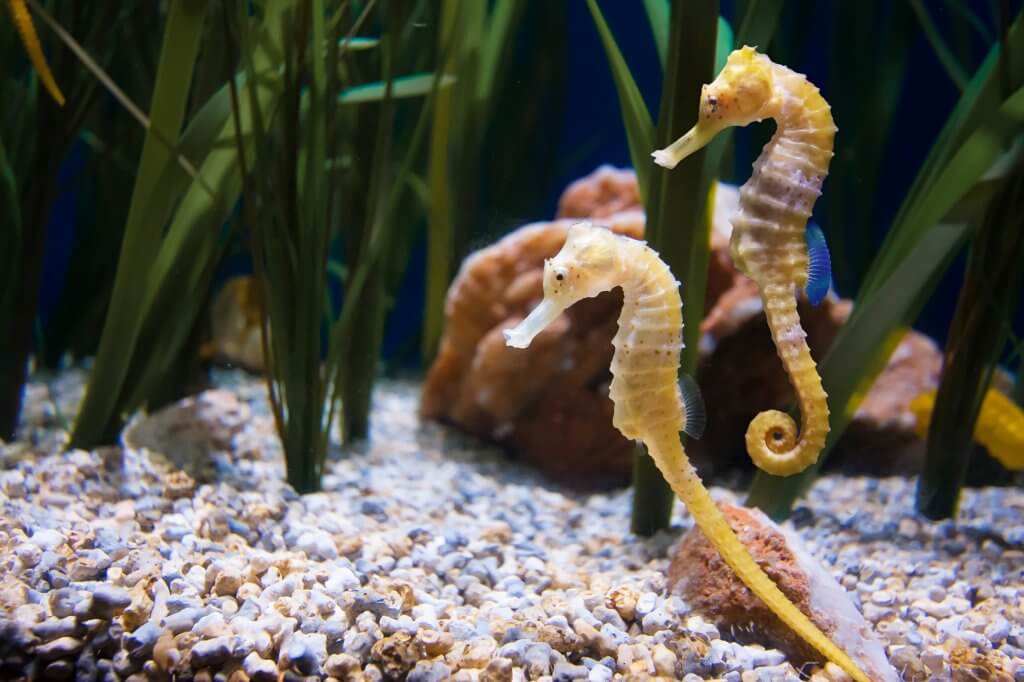Known as the most romantic creatures in our oceans (and possibly more romantic than us humans), there are 40 different known species of seahorse. Now, we’re not saying they swim up to each other with bunches of red roses linked to their tails, but they do link their tails together to swim in pairs.
Just Keep Swimming
Believe it or not, seahorses are actually very weak swimmers, which is why they prefer to swim in pairs. Seahorses swim in an upright position and rely heavily on their dorsal fins (beating at 30-70 times per second) to slowly propel along – that’s just 5ft per hour!
Its pectoral fins are located either side of its head to help with stability and to help it change direction in the water. Seahorses are in fact the slowest-moving fish in the ocean!
Masters of Disguise
If seahorses being small wasn’t making it hard enough to spot them, then their ability to camouflage certainly will! Seahorses can copy the colour of underwater plants and surroundings to help avoid predators. How? Seahorses have chromatophores, which are special cells in their skin, enabling them to mimic colourful surroundings.

Big Eaters
They may be small – measuring between 0.6-14 inches – but they can eat a lot! Because seahorses have no stomachs (or teeth), food passes through their digestive systems extremely quickly.
Seahorses actually have to eat almost constantly to stay alive – mainly feeding on plankton and tiny fish. Seahorses can consume 3,000 or more brine shrimp per day! Why not get a first-hand look at one of our seahorse daily talks and feeds?
We Are Family
When seahorses have decided on their mates, they mate for life and are monogamous – cute!
What’s even cuter is that these couples link their tails together and do underwater courtship dances that can last for hours.
During mating, the female seahorse deposits up to 1,500 eggs into the male’s brood pouch, where the eggs fertilise. The eggs are carried in the male’s pouch for 2-4 weeks until they hatch. And guess what?! A fry (baby seahorse) can fend for themselves instantly! You can get a closer look at baby seahorses in our Learning Lab.
Seahorsing Around
What are you waiting for? Get a closer look at these incredible creatures that can move their eyes independently from one another. We guarantee you’ll instantly fall in love with these underwater star-crossed lovers.
If the seahorse courtship has got you feeling the underwater love, then how about giving us a like and a follow on Facebook and Twitter?
